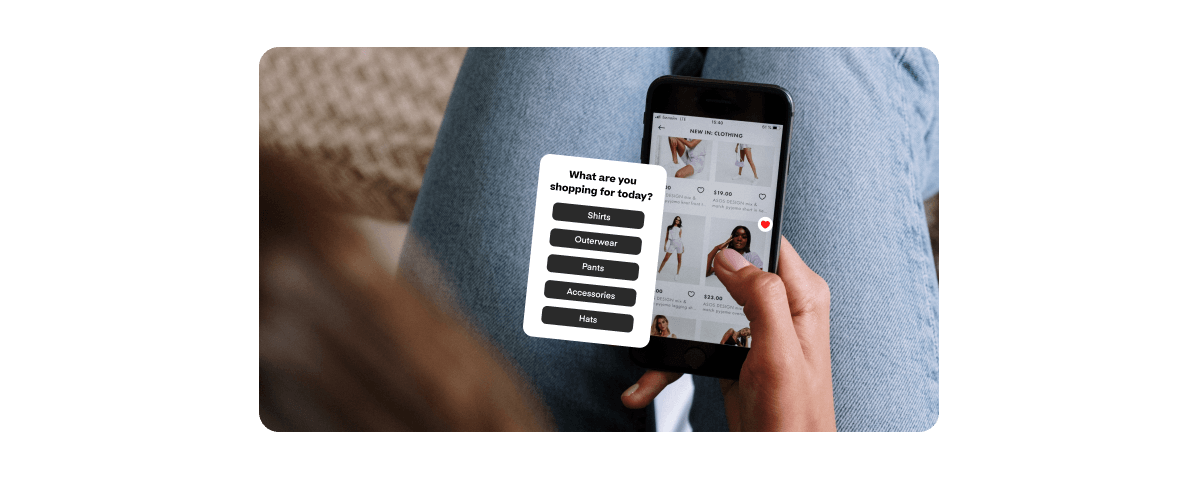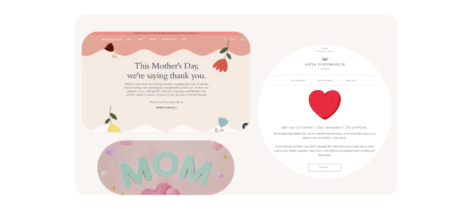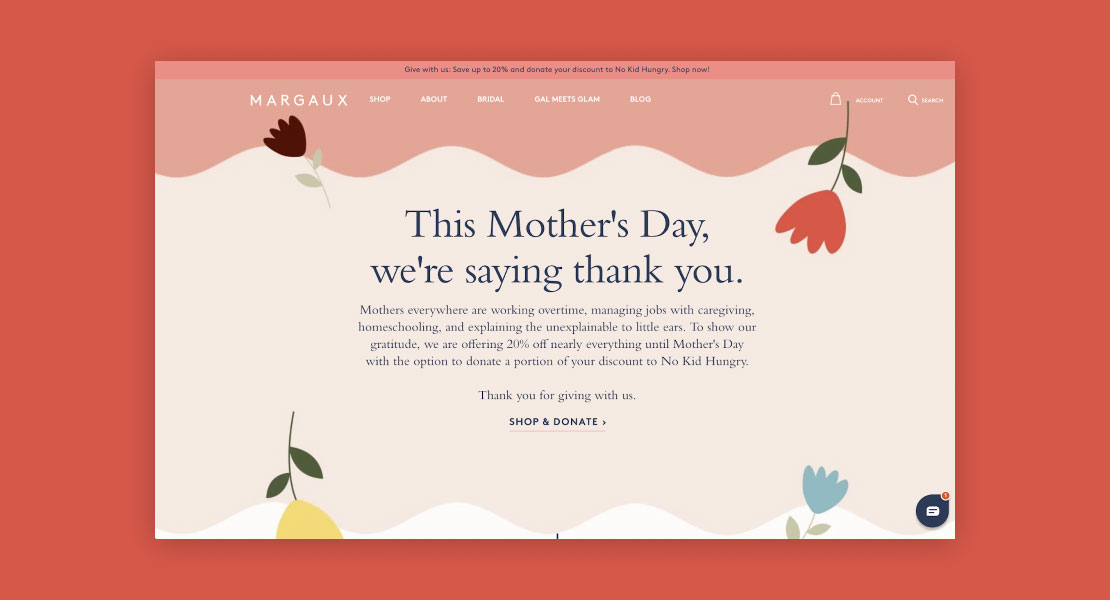While changes to iOS and third-party cookies were the primary catalyst behind the zero-party data movement, the writing has been on the wall. As technology’s capabilities increased, so did consumer expectations for personalization and relevance. To fulfill those expectations, our tools needed a change, and now, owned marketing is more important than ever. The brands that prioritize data collection (and its use) will be the ones who succeed.
By now, marketers across the globe have heard the spiel about zero-party data and how important it is. Yet, the why remains elusive. How to collect and leverage that zero-party data properly to create personalized experiences at every touchpoint for consumers.
Zero-Party FAQs
Here are a few answers to the most frequently asked questions we get about zero-party data for those who need a TL;DR version:
Zero and first-party data differ in how users grant consent. Zero-party data is purposely and voluntarily shared, while first-party data is more passively gathered.
Second-party data is first-party data that a company collects and then shares with another company. Third-party data is collected through a variety of sources. Both second and third-party data are considered less reliable than zero and first-party data because they come from outside sources.
A ton! Zero-party data is OWNED data which means no matter what changes to cookies occur in the future, you’ll always have access to it because you collected it directly from your customers.
Zero-party data is the most valuable data a marketer can have. It’s directly from the source, so incredibly accurate + relevant to your business needs. Not to mention, helps build relationships with customers through improved experiences and personalization.
Now, let’s dive into the detailed explanation of exactly what zero-party data is, how to collect & use it across marketing channels, plus some real-life examples of it in action.
What is Zero-Party Data?
Zero-party data is anything that a visitor intentionally and voluntarily shares with you. Some examples include:
- Polls, surveys, quizzes
- Product preference indicator (i.e. mens vs. womens clothes)
- Comms preferences
- Email/SMS signups
- Birthday
Think of zero-party data as conversational data, something a friend explicitly tells you. This is commonly mixed up with first-party data, which, while still “owned,” has distinct differences.
What is First-Party Data?
First-party data is anything about a visitor that is passively gathered from interactions and behavior. Some examples include:
- Purchase history
- Browsing data
- Offsite channels (i.e. email clicks)
- Discounts used
- Social data (i.e. follower count, influence)
Think of first-party data as implied data, something a friend shares with you indirectly. Still important, still useful—but different from zero-party data in how the user grants consent.
Why Does Zero-Party Data Actually Matter?
First and foremost, it improves the customer experience through personalization and relevance. But zero-party data also impacts the efficiency and effectiveness of your business:
- Improve ROAS. You’ll save money on ads because you can retarget, exclude, and provide ads based on a customer’s need. Then, drive them to your site to engage with improved messaging and UX.
- Privacy Compliance. You’ll set yourself up for a sustainable system with regard to data privacy laws. As more (& stricter) regulations come into play, you won’t have to worry about suddenly being without–owned data.
- Increased Revenue. 80% of shoppers are more likely to purchase if a brand offers a personalized experience.
- Reduce Resource Waste. More accurate data (because your customers provided it themselves) means you can create more granular campaigns and hone in on your most profitable customers.
But zero-party data doesn’t have to be limited to just improving your marketing campaigns & messaging. It can extend to the rest of your business like:
- Inventory Forecasting: Zero-party data builds a better understanding of what customers are shopping for and when to avoid sell-outs and excess inventory.
- Product Development/Improvement: Zero-party data will help you uncover areas of opportunity like an influx of bad reviews that a product breaks often or those wishing you made XYZ item
- Feature Implementation: Zero-party data can help dictate where to focus new retention efforts, like introducing a loyalty program or adding a product subscription option.
- Content Marketing: Improve performance by understanding what interests customers the most and how they interact with it.
At the end of the day, it comes down to establishing trust by using the data shared with you to power personalized experiences. Once you start, zero-party data will have an exponential impact on your business in almost every area.
How to Collect Zero-Party Data
A lot of brands are concerned about asking too much of their visitors and think the trade-off between asking for this zero-party data will result in lower opt-in or conversion rates. But don’t worry; 83% of consumers are willing to share personal info with the expectation of receiving messages about products that are based on their expressed interests.
Let’s dive into some of the top ways we see e-commerce brands collect zero-party data from visitors and real-life examples of how they leverage it.
- Enhanced Pop-Ups: These are lead captures that collect more than just an opt-in. Ask for a secondary piece of zero-party data to immediately personalize their welcome experience, like birthdays, product preferences, zip codes, etc. Make sure to use this data to provide them with the right user experience right from the start.
- Quizzes or Surveys: These are such an engaging way to interact with customers and can be something you do at the start or leverage in an exit offer to help them find the right item. Finish your e-commerce quiz with a zero-party data-powered product recommendation and make it easy for them to continue moving toward the point of conversion.
- Comms Preferences: Zero-party data isn’t just one-and-done; it can evolve over time. Enable customers to change their preferences so they continue to receive the content they want, where they want it, and especially when they want it.
- Create an Account: We don’t advocate forcing shoppers to create an account to check out or anything. However, they’re a great way to continually collect zero-party data and provide additional touchpoints to engage consumers with. For example, a loyalty program, membership, or product subscription program. Reward every piece of data they share with you and provide increasingly more personalized/effective experiences.
- Reviews: Product reviews are important to have on your website no matter what since 95% of shoppers read them before making a purchase. But they’re also a gold mine for zero-party data that can be linked up to individual customer profiles or to understand trends for segments as a whole.
Each of these zero-party data collection strategies will help you understand customer preferences, their needs, and why they’re shopping with your brand. The key, though, and what so many brands are lacking in their zero-party data approach, is the next step of properly using that data to personalize communications with subscribers to both delight them and provide value beyond the initial flow.
Setting Up an Enhanced Pop-Up to Collect Zero-Party Data
Take your current lead captures (email or SMS) and take them up a notch by adding an additional ask. This can be something more elaborate with a multi-step experience based on each previous screen’s response or more simple, like a radio button.
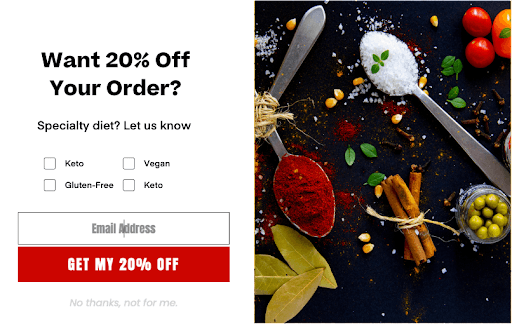
Not only can it power personalization right off the bat, but it will prevent you from sending irrelevant welcome emails that may push them away from your brand rather than towards it. Irrelevant product recommendations, unwanted content, etc., are all things to avoid when first trying to show value and build a connection with new subscribers.
Justuno client Snow Monkey added a zip code field to their email opt-in since they were trying to tie together in-store distribution with their e-commerce presence. They used the zip codes to create targeted email campaigns to those in specific zip codes when they launched in nearby stores.
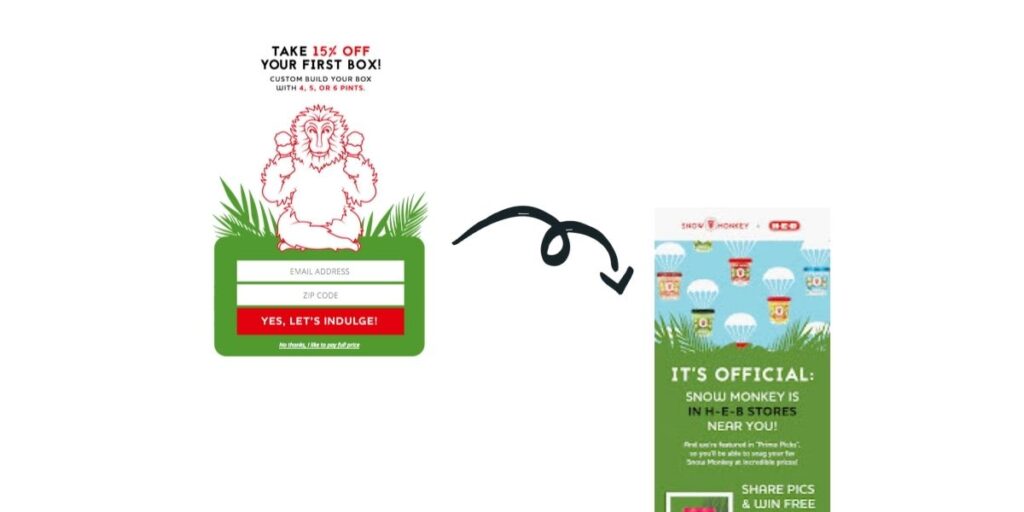
Merchants might balk at adding this field to their opt-ins, thinking it will reduce subscription rates. However, we always recommend you A/B test everything at least once sometimes; you might be like Snow Monkey, who grew their list 5X with their 2-field pop-up. Alternatively, if you want to prioritize the email opt-in, you can always elect to ask these questions on the follow-up screen after they’ve provided their email!
The most helpful piece of advice we can give you when it comes to zero-party data and your pop-ups?
Pick the piece of data that is most valuable for you.
Utilizing Quizzes/Surveys For More Zero-Party Data
Quizzes are often the first thing to come up when talking about zero-party data. They’re a great way to engage first-time visitors, enabling you to guide them towards the product best suited for their needs, not to mention a gold mine of zero-party data. Think something like a product recommender, size-finder, shade-matching, etc., that ends on an email opt-in to unlock results, an incentive, etc.
Not only do these gamify their experience, providing a more engaging way for them to connect with your brand while discovering the right products for their needs, but even if they don’t purchase–you have valuable zero-party data to feed into awareness and re-targeting campaigns later on.
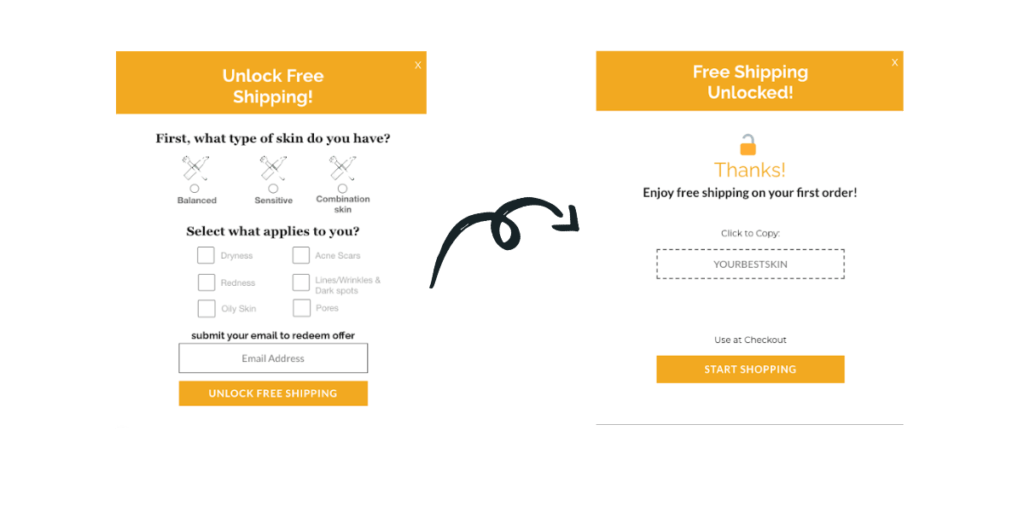
If using these as an exit offer to keep traffic onsite (especially great for those of you with harder-to-pick products)–then maybe leave off the opt-in part in favor of a same-session conversion nudge instead. Justuno customer Midland did this and was able to keep 20% more traffic onsite with their radio finder quiz!
Setting Communications Preferences Is Zero-Party Data
Brands provide the option for subscribers to “reduce email frequency” as a choice when someone goes to unsubscribe from emails—but communications preferences can be so much more than that. It can be an opportunity to highlight a preferred channel (email > SMS, push > email, etc.) so that subscribers are engaging with you on the channels they most prefer.
Alternatively, it gives subscribers a chance to update their profiles (remember in our earlier section about enhanced pop-ups where we talked about picking the number one piece of data to ask?) Well, that can change.
For example, Premama, where someone may be in a different stage of their parenthood journey just a few months after signing up with them. They include an update my preferences link in the footer of every email since the stage of pregnancy is so central to their messaging.
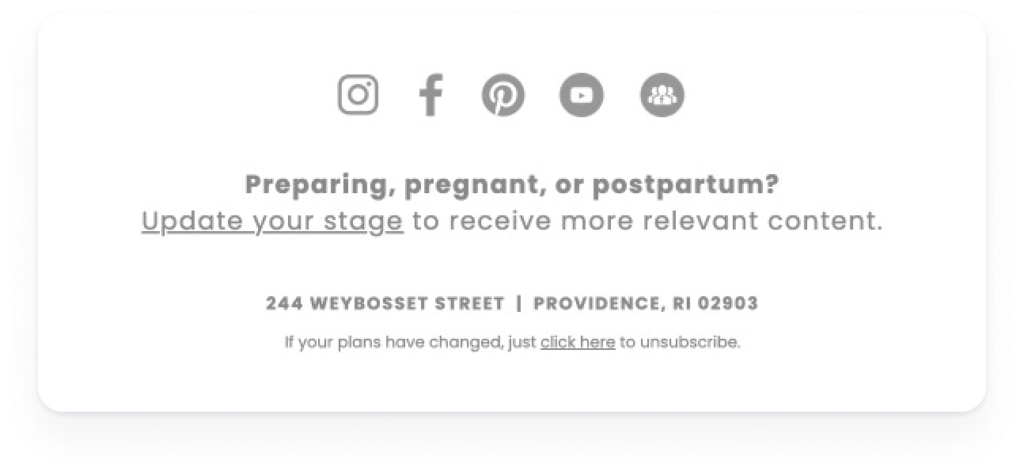
You can send occasional emails directly asking subscribers to update certain data points or just check in about how they feel about the marketing campaigns they’ve received. Their answers will not only include valuable feedback for your messaging approach but preemptively reduce unsubscribes by allowing them to update their settings at any time.
Create an Account For Maximum Zero-Party Data
Customer accounts are a gold mine for brands when it comes to data, not to mention that they provide so many more opportunities to personalize and delight customers.
Joining your loyalty program will not only allow you to better understand purchase habits but also provide an avenue to reward customers for providing additional data like product reviews (more on that below), creating and providing user-generated content (UGC), entering their birthday for special offers, and letting you know exactly what they’re looking to get out of your brand.
We don’t recommend requiring an account for purchases; simply rewarding customers for taking that extra step and creating one + continually adding to it for a more robust profile. Repeat customers, higher CLV, and more zero-party data? Sounds like a win to us!
Leverage Reviews For Zero-Party Data Collection
Product reviews are yet another gold mine for zero-party data since this is often information about both their brand experience and individual attributes that can be appended to their profile for an even deeper understanding. These attributes are what provide the context that makes zero-party data so powerful – not to mention helping potential customers place themselves in the reviewers’ shoes.
For example, a woman shopping for a wedding guest dress may read a 5-star review from a woman who’s 5’2” and her same size. That context will be infinitely more powerful than any “true to size” label or product photography your brand provided.
There are more nuggets to be found in customer reviews as well, such as requests to bring back old products, sold-out colors, or flavors to help with product development.
Even negative feedback has a place, helping you improve products, understand pain points, and provide solutions to issues you may not have even known customers were having.
All possible through reviews providing the zero-party data + context you need to identify hidden opportunities.
Automate Personalization Using Zero-Party Data
Now that you’ve started gathering zero-party data using one or multiple of the above methods, it’s important to actually use it. Customers are providing this with the expectation it will be used to better their experience, not just sit in the backend of a database somewhere. And that’s where automation comes in.
The welcome series based on the data points collected in the opt-in is a great place to start. It’s small, but it makes a big first impression since so few brands are doing it. The next step is feeding that and subsequent zero-party data points collected into more advanced automations like:
- Annual birthday flow with an exclusive gift
- Post-purchase follow-up with specific content or up-sells
- Information campaigns based on indicated interests
The key to scalable zero and first-party data collection/use is organization–make sure that you’re using the data you are collecting, finding gaps in your program, & adjusting strategy accordingly.
Unorganized zero-party data can lead to major no-nos like not actually personalizing the flow (or worse, sending the wrong one).
Pro Tip: Download our ultimate guide to Zero and First-Party Data, with a chapter on every part of your MarTech stack to optimize the collection and use of your newfound data at every point in the customer journey.
Real-Life Examples of Zero-Party Data Strategies
Premama
Fuel Made client, Premama, has a drop-down selector in their lead capture for the subscriber’s parenthood stage. The stage selected determines which branch of the welcome flow they go down, tailoring its content precisely to the right products and resources someone would need. Let’s take a look at the program as a whole to see just how granular you can get with a single point of zero-party data when done right:
- Email lead capture with parenthood property that is sent to Klaviyo
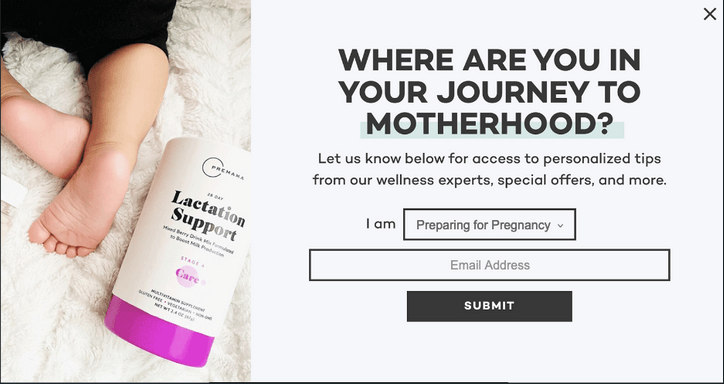
2. Based on the value of that property, they’re sent down one of three welcome workflows that feature different product recommendations, educational content, resources, and offers. Starting with an introduction email.
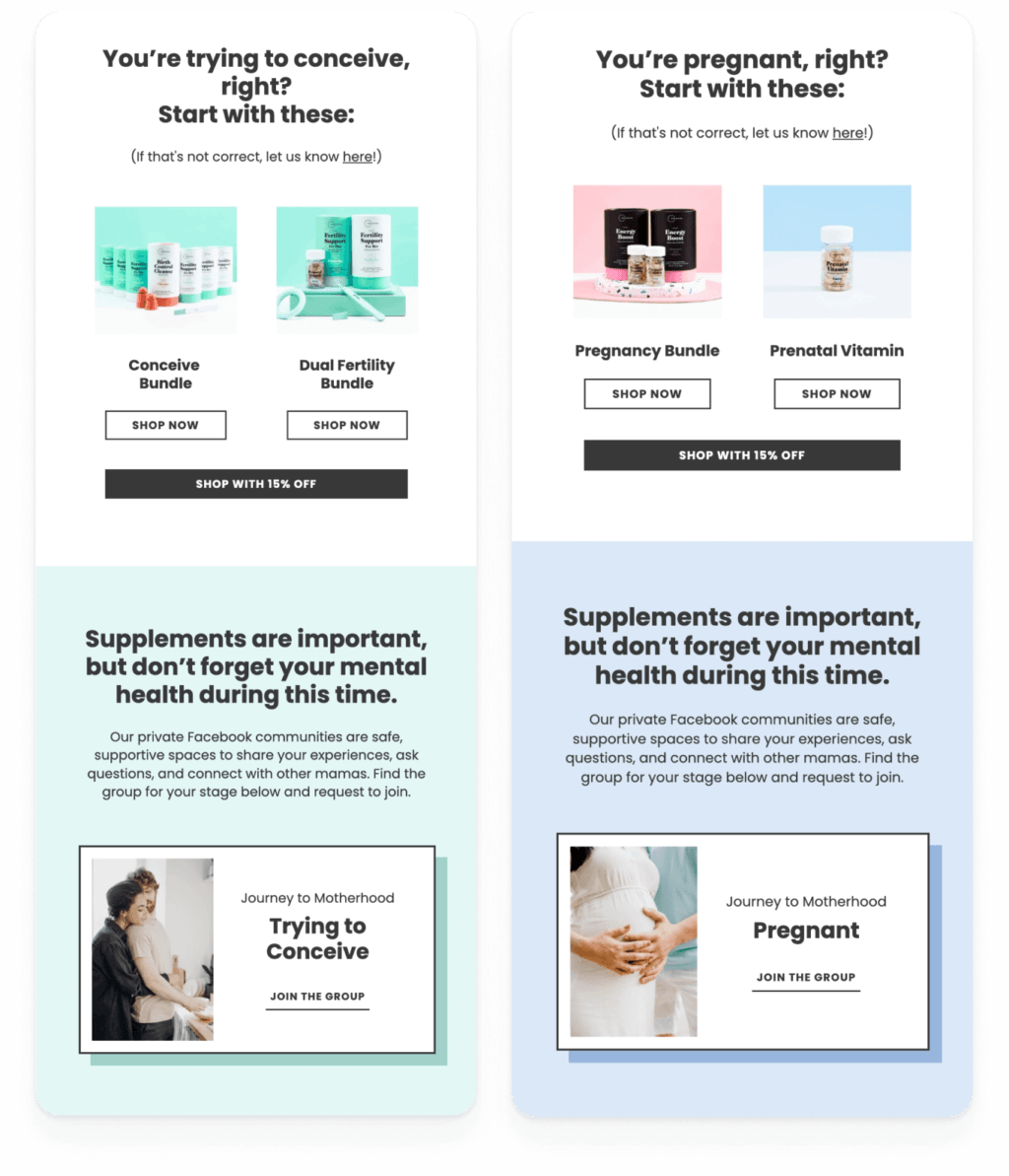
3. A few days later, they receive another email with targeted content & recommendations.
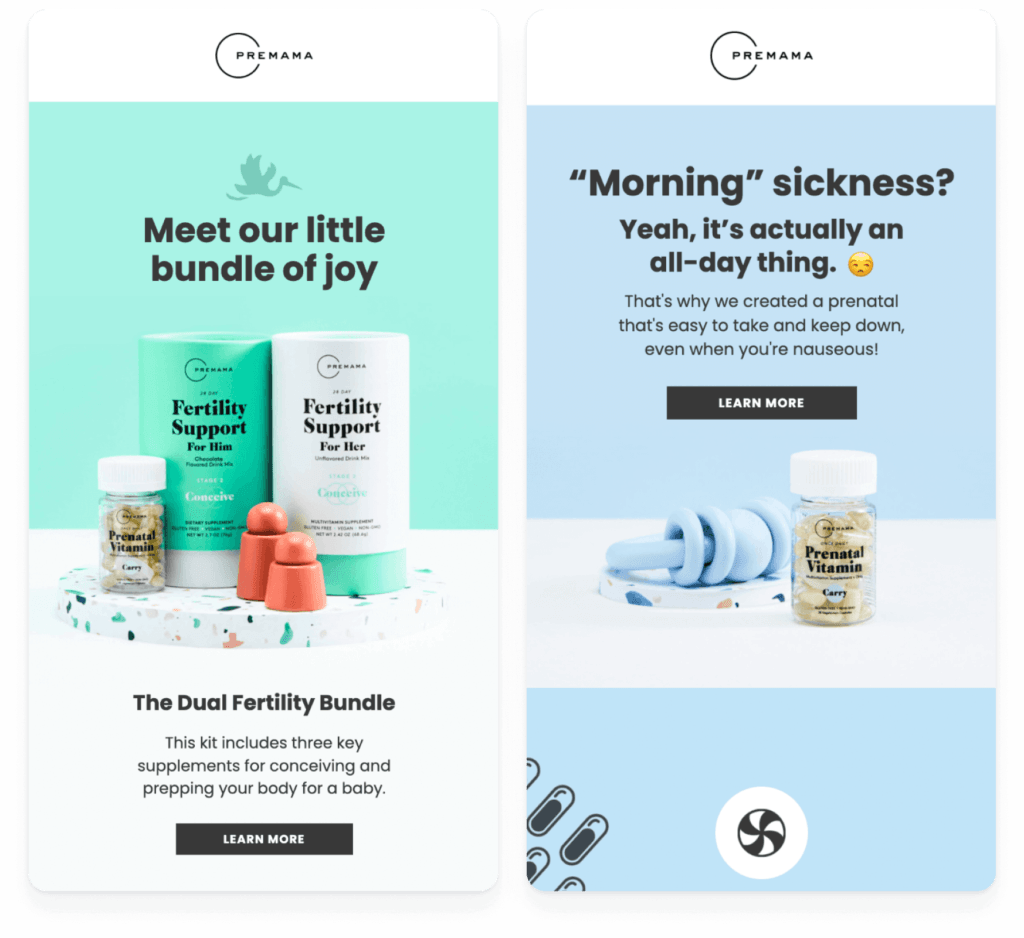
4. And this continues as they begin their Premama experience over the course of twenty days, totaling up to twelve different emails for each segment.
5. But they’re not done there; they use that same value to segment one-off sends, newsletter campaigns, & post-purchase flows.
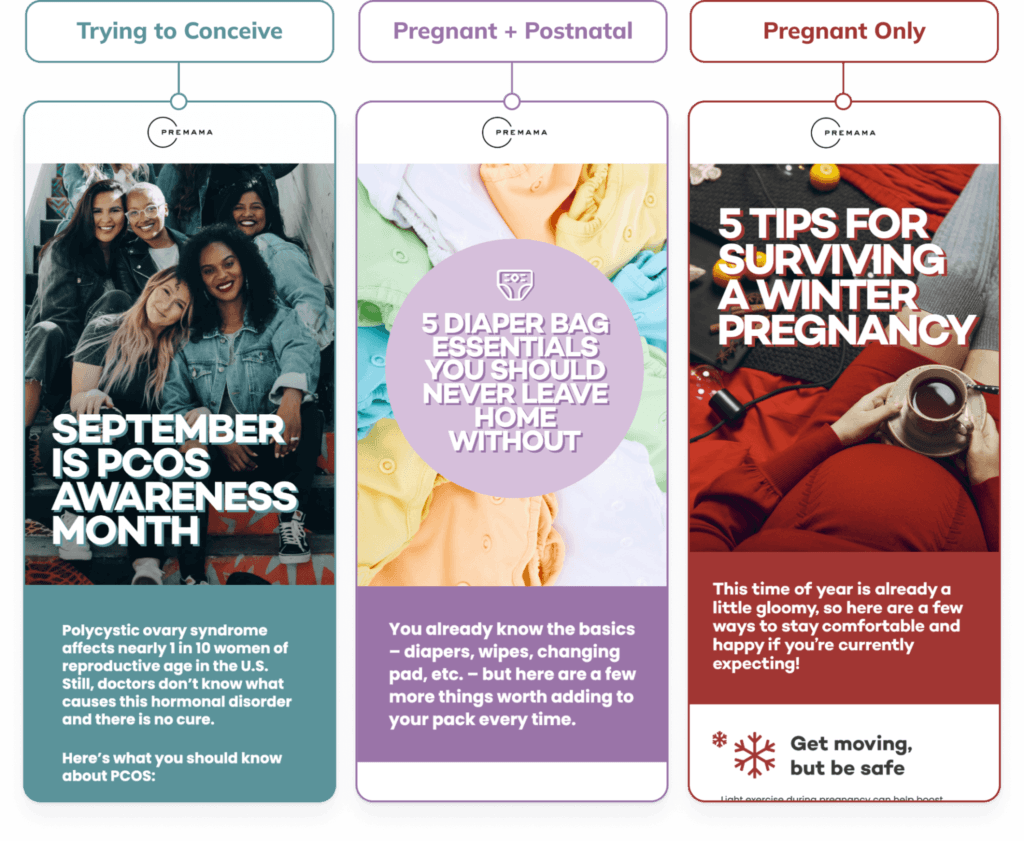
6. Their agency, Fuel Made, also makes it easy for subscribers to update their stage at any time, which in turn would trigger a corresponding email automation based on their move and provide relevant information for this new lifecycle.
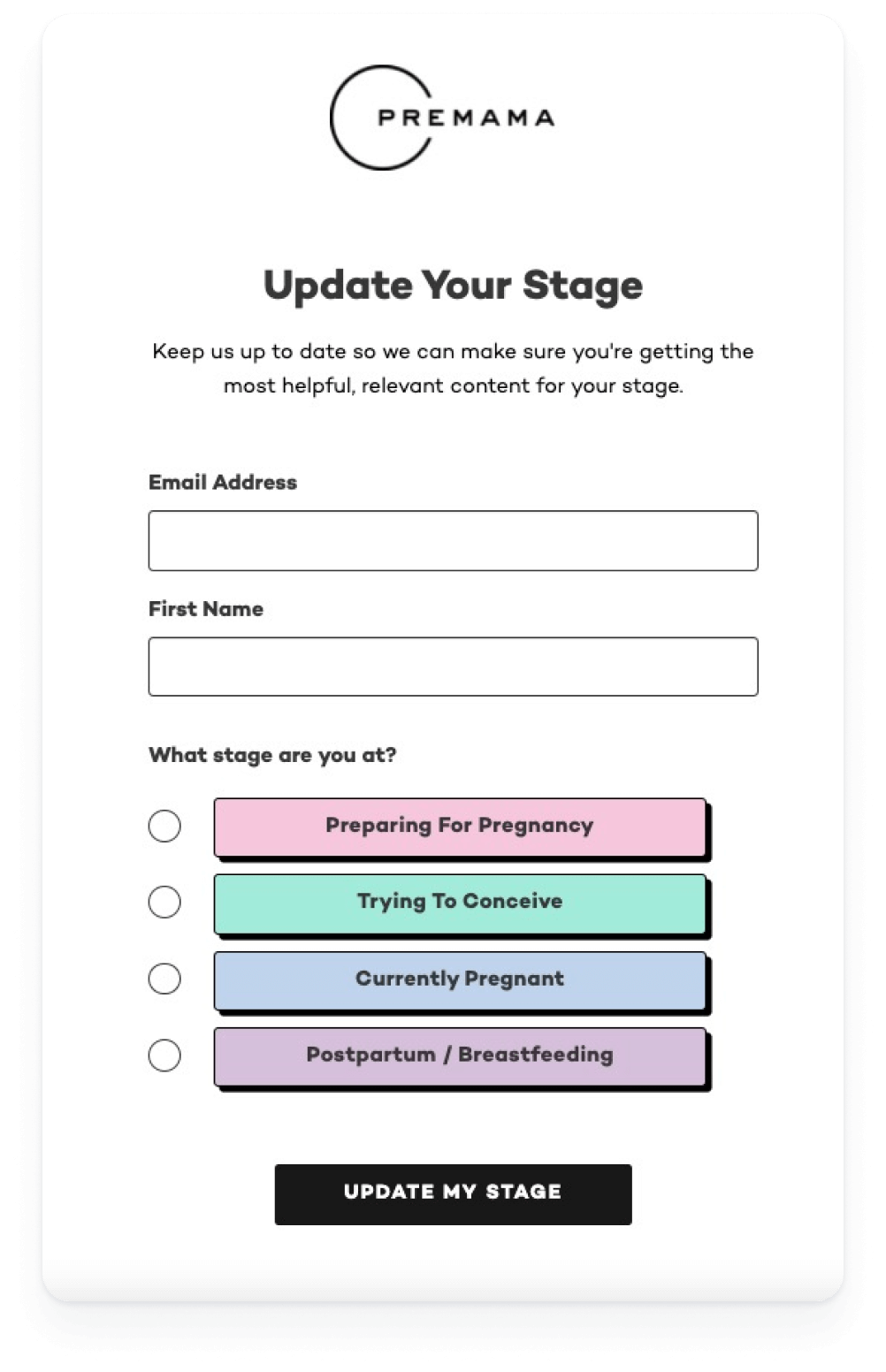
Tomlinson’s
Another Fuel Made client, Tomlinson’s, also has a strong zero-party data strategy powering their welcome flow that begins with their lead capture. This multi-step experience starts by asking if they have a cat, dog, or neither.
Then based on their answer, a second screen appears where they can submit their email (different versions for each)–with their response being pushed into the ESP & it sends them an email that features dogs vs. cats vs. a more generalized “pet” welcome email.
- Email lead capture with pet-type property to select, and then a second screen shows allowing them to enter their email address & the property is sent to Klaviyo.
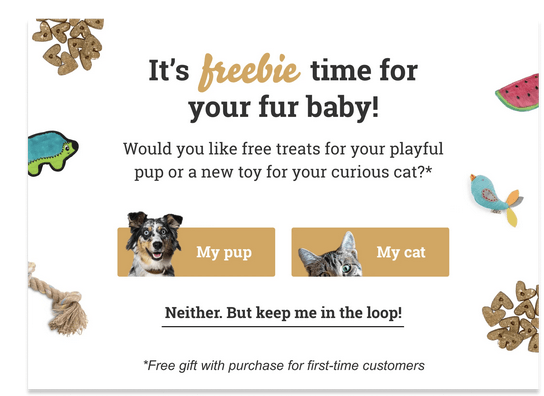
2. Then Klaviyo triggers a welcome flow with corresponding imagery; you can see the cat example below.
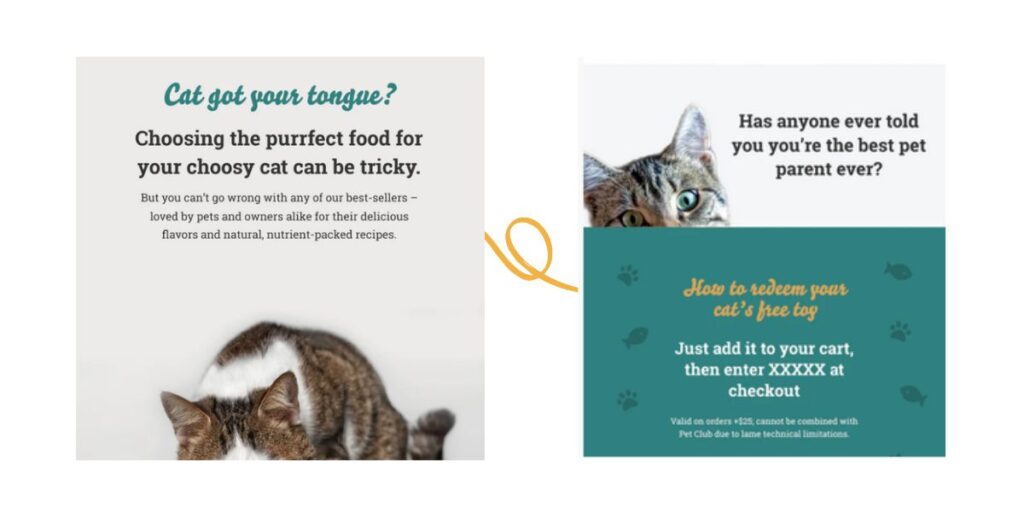
Not only is this a great way to kick off the relationship with new subscribers, but it performs well too. Tomlinson’s had very successful average capture rates on their mobile and desktop pop-ups of 11.74% and 7.54%, respectively.
And the welcome flow that follows up from those pop-ups boasts an exceptional conversion rate of 23%.
For some perspective on how well Tomlinson’s pop-up and welcome flow are performing, Fuel Made’s goal with clients is usually to reach an 8-10% conversion rate for welcome flows—after capturing about 5% of traffic via the pop-ups.
In other words, these Tomlinsons are performing twice as well as the average industry rates! Check out the full case study on Tomlinson’s here.
Final Thoughts on Zero-Party Data
Zero-party data is one of the most important things you can focus on for your brand; simply put, you can’t afford not to. 91% of consumers say they are more likely to shop with brands that provide offers and recommendations that are relevant to them.
Personalization isn’t just a “nice to have.” It’s increasingly expected, and zero-party simply makes it more accessible for brands of all sizes. Not to mention it improves the effectiveness of marketing efforts as a whole while delighting customers.
Looking to collect more zero-party data from your website visitors?
Get started with a free 14-day trial on Justuno, or book a conversion audit with our team for actionable insights into how your customer journey can be optimized.
